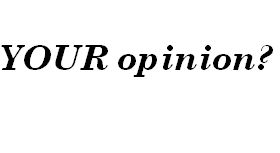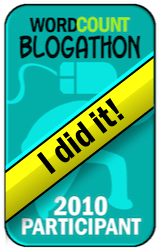You’ll learn the names of some useful resources for writers in this post. But first I must tell you why writing this blog post was so hard for me.
Blogs? What blogs?
“10 blogs I can’t live without” is a topic that participants in the WordCount Blogathon are supposed to post about on May 10. When I read the topic I thought “Blogs? What blogs?” I simply don’t consume blogs as blogs. I’m more likely to catch my favorite bloggers on Twitter.
On the other hand, some of my readers probably don’t think of me as a blogger because they visit my blog through my monthly e-newsletter or my LinkedIn status updates. They might respond to the WordCount Blogathon assignment by saying, “I don’t read any blogs.”
People consume their online information in different ways. This assignment reminded me that it’s important to make information available to readers in the format they prefer.
Online resources for writers
Here are some of my favorite online resources for writers. They’re not all blogs. Nor have I limited my list to 10.
B2B example
If I were stranded on a desert island with such slow Internet connection speed that I could only read one e-newsletter or blog, I’d choose Michael Katz’s E-Newsletter on E-Newsletters. It has a charming style that sets a good example for business-to-business writers communicating.
Attracting readers to your blog
Some blogs do a great job of showing how to write copy that captivates readers. When I began blogging I regularly read Brian Clark’s Copyblogger and Darren Rowse’s ProBlogger. More recently, I’ve found some good ideas on Nicholas Cardot’s SiteSketch. They’re worth reading, although I enjoyed them more when their creators wrote more of the content.
Grammar, punctuation, usage
When I’ve got a grammar, punctuation or word usage questions, sometimes I’ll just Google it. But I often don’t trust the answers I find. This is when I mosey on over to Grammar Girl Mignon Fogarty’s Quick & Dirty Tips for Better Writing or the Purdue Online Writing Lab. By the way, remember how I mentioned delivering content the way that readers like to receive it? Fogarty has been podcasting her blog posts for awhile. She’s also on Twitter and Facebook. Plus she has published in old-fashioned print book format.
Onlinestylebooks lets you search 42 style books at once. It’s a relatively new site, so I haven’t used it much.
For occasional tips, I follow APStylebook on Twitter. They’re the folks who officially changed the spelling from “Web site” to “website” earlier this year. As you may have noticed, I was ahead of them in using “website,” but I still respect them as a style setter.
Some other tweeps with useful style tips include EditorMark, Copyediting, and LawWriting. There are many more worth following. You’ll find them if you’re a Twitter devotee.
Inspiration
Jon Winokur’s Twitter feed, AdviceToWriters, is great for inspiration. I like his book, also called Advice to Writers.
Humor
For word geek humor–yes, there is such a thing–follow FakeAPStylebook on Twitter.
____________________
Receive a free 32-page e-book with client communications tips when you sign up for my free monthly newsletter.
Copyright 2010 by Susan B. Weiner All rights reserved
 If you find this amusing, you can see many examples in the Atrocious Apostrophe’s Flickr stream.
If you find this amusing, you can see many examples in the Atrocious Apostrophe’s Flickr stream.



